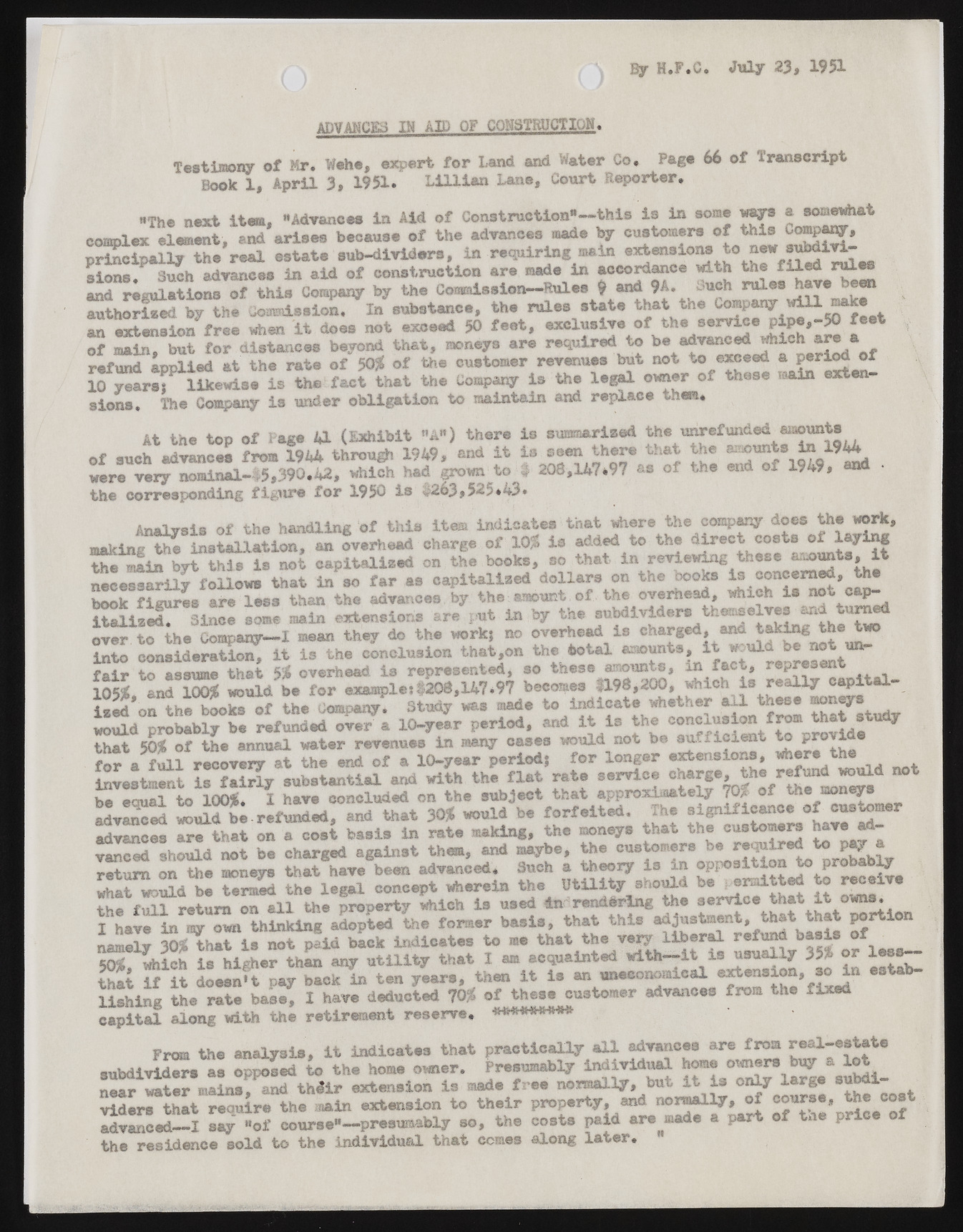Copyright & Fair-use Agreement
UNLV Special Collections provides copies of materials to facilitate private study, scholarship, or research. Material not in the public domain may be used according to fair use of copyrighted materials as defined by copyright law. Please cite us.
Please note that UNLV may not own the copyright to these materials and cannot provide permission to publish or distribute materials when UNLV is not the copyright holder. The user is solely responsible for determining the copyright status of materials and obtaining permission to use material from the copyright holder and for determining whether any permissions relating to any other rights are necessary for the intended use, and for obtaining all required permissions beyond that allowed by fair use.
Read more about our reproduction and use policy.
I agree.Information
Digital ID
Permalink
Details
More Info
Rights
Digital Provenance
Publisher
Transcription
By H.F.G. July 23, 1951 ADVANCES M AID OF CONSTRUCTION. Testimony of Mr. Wehe, expert for Land and Water Go, Page 66 of Transcript Book 1, April 3, 1951. Lillian Lane, Court Reporter, "The next item. "Advances in Aid of Construction"— this is in some ways a somewhat complex element, and arises because of the advances made by customers of this Company, principally the real estate sub-dividers, in requiring main e^ensions to new s^divi-sions. Such advances in aid of construction are made in accordance with the filed rules and regulations of this Company by the Commission— Rules 9 and 9A. 3uch rules have authorised by the Commission. In substance, the rules state that the Company will ^ske an extension free when it does not exceed 50 feet, exclus^eoftheserviee pipe,-50 feet of main, but for distances beyond that, moneys are required to be a d v » n ^ ^ i c h a refund applied at the rate of 50* of the customer revenues but not to exceed a 10 years; likewise is the fact that the Company is the legal owner of these main extensions, The Company is under obligation to maintain and replace them. At the top of Page 41 (Exhibit "A") there is summarized - ?~ 1~ and it is seen there tthhaet u ntrheef uanmdoeundts in 1944 owfe rseu"cvhe rayd nv^aunlcneas l-f^r5o,m3 1909.4442 ,t hwrohuigchh 1h9a4d9 grown to $ 208,147*97 as of the end of 1949, and • the corresponding figure for 1950 is -#263,525*43* Analysis of the handling of this item indicates that where the company does the work, making the installation, an overhead charge of 10% is added to the direct costs of 1 3? j5 the main byt this is not capitalised on the books, so that in reviewing these anounta, it necessarily follows that in so far as capitalized dollars on the books is concerned, the book figures are less than the advances by the amount of. the overhead, which is not e&P~ S i z e d ! Since some main extensions are j ut in by the aubdividers themselves and turned over to the Company— I mean they do the work; no overhead is charged, and taking the two into consideration, it is the conclusion that,on the total amounts, it w.uld be not unfair to assume that 5$ overhead, is represented, so these amounts, in fact, represent 105$ and ioO$ would be for examples 1208,147*97 becomes 3198,200, which is really capitalized* on the books of the Company. Study was made to Indicate whether all these moseys S f S U ovt7, 10-year Period, and It la the conclusion from that etuhy that 50* or the annual «ater revenues in many oases uould not be euffioient for a full recovery at the end of a 10-year period; for longer extensions, wh®re t^ investment is fairly substantial and with the flat rate service charge, the refund would not be eoual to 100$. I have concluded on the subject that approximately 70% of the moneys a d v S d w^uldbi. refunded, and that 30$ would be forfeited. The significance of customer advances are that on a cost basis in rate making, the moneys that the customers have advanced should not be charged against them, and maybe, the customers be required to return on the moneys that have been advanced. Such a theoiy is in opposition to probably be tJZd the legal concept wherein the Utility should be r a t t e d to receive the full return on all the property which is used Inrenddring the service that it owns. I have in my own thinking adopted the former basis, that this adjustment, ^hat that portion namely 30$ that is not paid back indicates to me that the very liberal refund basis of 5M % iS> I. higher t h « aay utility that I a*ecjuaiuted uith-lti,ueually 35* or ! « £ ? that if it doesn't pay back in ten years, then it is an uneconomical extension, 3° in establishing the rate base, I have deducted 70% of these customer advances from the fixed capital along with the retirement reserve, w h h h b b h w - From the analysis, it indicates that practically all advances are from real-estate subdividers as opposed to the home owner. Presumably individual home owners buy a lot near water mains, and thSir extension is made free normally, but it is on^ *a*S® the^ost vaiddvearnsc etdh—atI rseaqyu i"roef tchoeu rmsaei"n— perxetseunmsaibonl yt os o,t hethier pcroosptesr tpya,i d anadr e made a part Sof tt ne 'porriiccee ooff the residence sold to the individual that comes along later. "

